Building a signature scent wardrobe means curating a collection of perfumes that suit different moods, seasons, and occasions while maintaining a core identity. A well-rounded fragrance wardrobe includes versatile scents that can be layered or worn alone, providing both consistency and variety without overwhelming choice. This allows anyone to express their personal style through scent confidently.
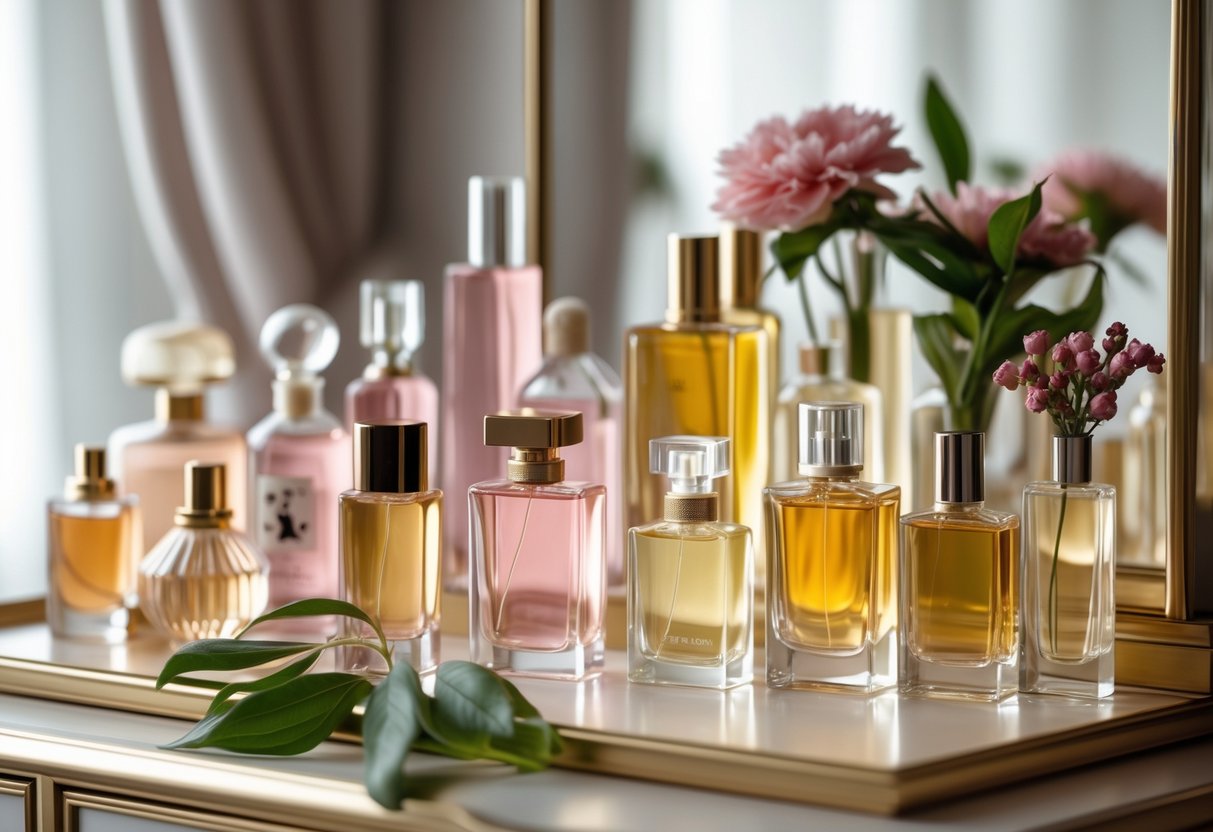
A perfume wardrobe is not just about owning many bottles, but selecting fragrances that complement one another and reflect different facets of a person’s character. From everyday signature scents to seasonal or event-specific options, each fragrance plays a distinct role. Understanding this balance helps create a practical and enjoyable collection rather than a random assortment.
People often start by identifying their preferred scent families or notes, then seeking variations that feel familiar yet fresh across different settings. This method ensures that the fragrance wardrobe remains personal and manageable, avoiding unnecessary complexity while enhancing daily scent choices.
Understanding Signature Scents

A signature scent is a personal hallmark that defines an individual’s presence. It provides consistency and helps navigate the balance between a singular characteristic and a versatile collection of fragrances.
What is a Signature Scent
A signature scent is a fragrance a person consistently wears and identifies with. It reflects personality and style through its unique blend of scent notes. People often seek a scent that feels natural and becomes a recognizable part of their identity.
This scent usually features a balanced composition that suits various occasions and lasts well on the skin. Choosing a signature scent involves testing perfumes to find one that harmonizes with body chemistry, climate, and daily activities. It becomes a subtle, olfactory extension of self-expression.
Benefits of Having a Signature Fragrance
A signature fragrance simplifies daily grooming choices, eliminating decision fatigue about what to wear. It establishes familiarity with others, often invoking positive associations or memories.
Wearing the same fragrance regularly can boost confidence due to comfort and consistency. It can also contribute to creating a personal brand, especially in professional or social environments, where scent subtly influences perception.
Investing in one high-quality signature perfume often saves money over time compared to frequently purchasing many different fragrances. The emotional connection built through repeated wear enhances the overall experience.
Scent vs. Fragrance Wardrobe
A scent wardrobe is a curated collection of fragrances serving different moods, seasons, or occasions. It offers variety but requires more time to manage and select appropriately.
A signature scent emphasizes consistency and simplicity. The wearer relies on one dominant fragrance as a daily go-to, which may be supplemented by occasional alternatives.
Building a fragrance wardrobe involves learning notes, families (such as floral, woody, oriental), and how scents interact with skin and climate. In contrast, cultivating a signature scent focuses on deep familiarity and attachment to one fragrance.
| Aspect | Signature Scent | Fragrance Wardrobe |
|---|---|---|
| Number of Scents | One main fragrance | Multiple fragrances |
| Purpose | Personal identity and consistency | Variety for seasons and events |
| Maintenance | Minimal daily choice | Requires selection effort |
| Emotional Connection | Strong, habitual association | Flexible, situational enjoyment |
Key Elements of Perfume and Fragrance
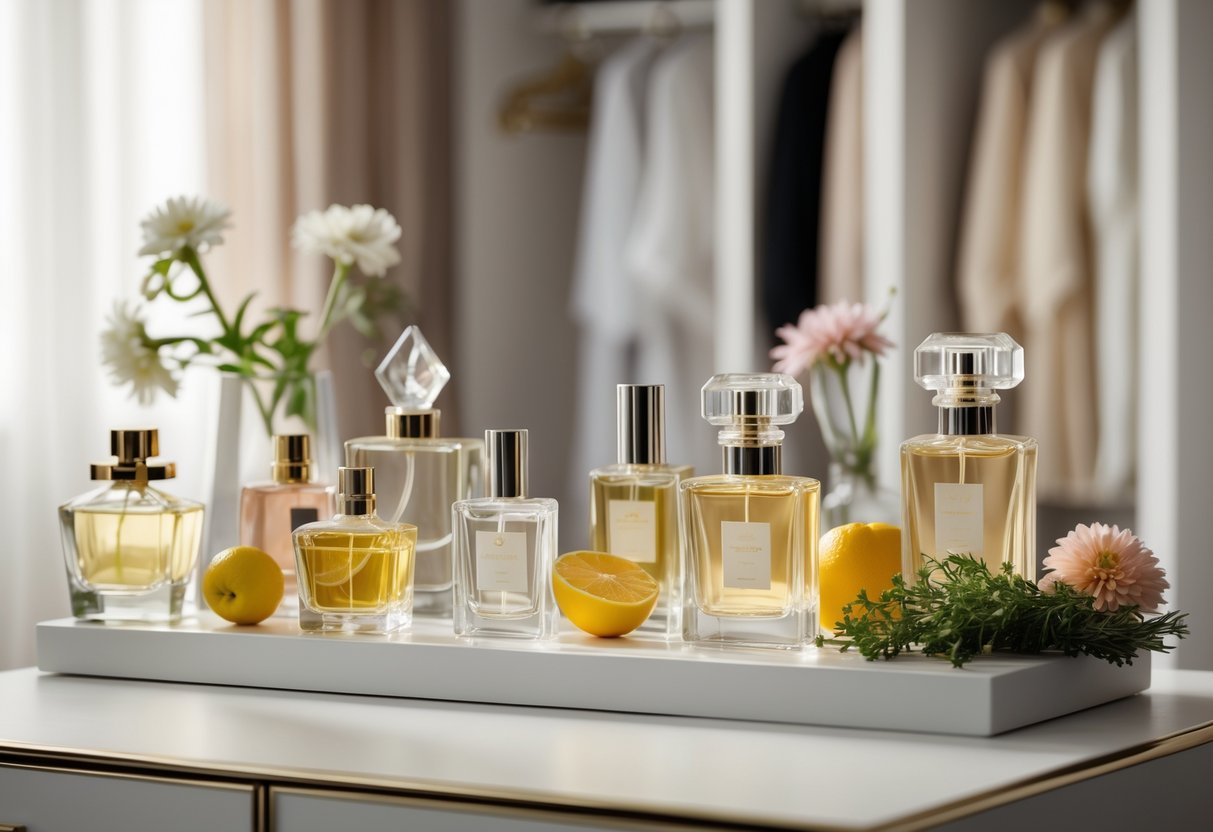
Building a fragrance wardrobe requires understanding how different components of a perfume interact and affect its scent and wear. Fragrances are complex blends characterized by layered notes, specific olfactory accords, and varying strengths that influence their presence and duration.
The Fragrance Pyramid: Top, Middle, and Base Notes
Perfume is structured in three layers called the fragrance pyramid. Top notes are the initial scents detected and are usually fresh and light, such as citrus or fruity notes like orange blossom. They last about 5 to 15 minutes.
Middle notes or heart notes emerge as the top notes fade. These often include floral scents like jasmine, gardenia, violet, peony, or lily of the valley. They form the core identity of the perfume and typically last for several hours.
Base notes appear last and provide depth and longevity. Common base notes include musk, vanilla, and amber. They help fix the scent to skin, lasting for hours or even days.
Popular Notes and Accords
Certain notes frequently appear in perfumes due to their versatility and appeal. Floral notes like jasmine, violet, gardenia, and peony bring softness and elegance. Vanilla and musk add warmth and sensuality, often serving as base notes.
An accord is a harmonious blend of several notes that create a unique scent character. Examples include woody accords, fresh green accords, or gourmand accords (like vanilla combined with sweet hints). Understanding these popular accords can help in selecting perfumes that suit different moods and occasions.
Understanding Sillage, Longevity, and Concentration
Sillage refers to how far a fragrance’s scent radiates from the wearer. Strong sillage means the perfume leaves a noticeable trail, while light sillage is more intimate.
Longevity measures how long a perfume lasts on the skin before fading. This often depends on the concentration and the specific notes used.
Perfumes come in different concentrations that affect both sillage and longevity. Higher concentrations like Eau de Parfum (EDP) usually last longer (4-6 hours or more) and have stronger sillage. Lower concentrations such as Eau de Toilette (EDT) tend to be lighter, shorter-lasting (around 2-4 hours), and more subtle in projection.
Types of Perfume: Eau de Parfum and Eau de Toilette
Eau de Parfum (EDP) contains around 15-20% fragrance oils. It is richer, more intense, and designed for longer wear. EDPs are ideal for evening or colder weather due to their depth and strong projection.
Eau de Toilette (EDT) has a lower concentration of about 5-15%. It is lighter, fresher, and better suited for daytime or warmer climates. EDTs often highlight the top and middle notes more distinctly since the base is less pronounced.
Choosing between EDP and EDT depends on personal preference, occasion, and desired intensity.
Curating a Signature Scent Wardrobe
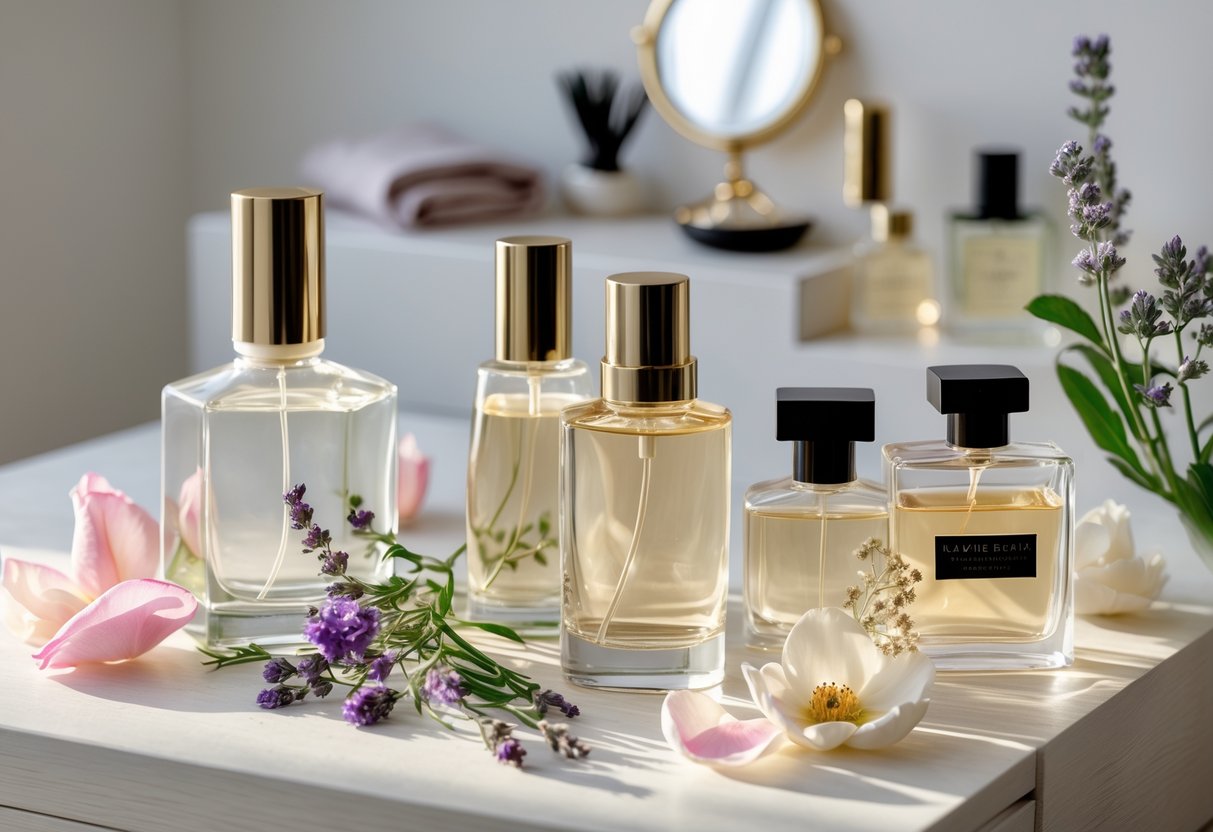
Building a fragrance wardrobe involves more than just selecting random scents. It requires understanding preferences, versatility, and uniqueness to create a perfume collection that reflects personal style and adapts to various occasions.
Identifying Your Personal Style and Preferences
The first step is to pinpoint what kind of scents resonate with your inherent style. This means exploring scent families like floral, woody, oriental, or fresh and noting which notes evoke the strongest positive responses.
Consider factors such as lifestyle and personality. Someone with an active, casual lifestyle might prefer fresh, citrusy notes, while a lover of elegance might lean toward richer, deeper scents like amber or musk. Testing perfumes on the skin is critical, as how a fragrance evolves can affect its suitability.
Keeping a journal of favorite scents and reactions helps clarify preferences, making selective choices easier when building a fragrance wardrobe. This ensures each perfume aligns with the wearer’s identity.
Choosing Versatile Scents for Different Occasions
A well-rounded fragrance wardrobe includes scents adaptable to various settings—daytime, evening, work, casual, or formal. Versatility is key to avoid overpacking the collection with similar or overly specific perfumes.
Focus on perfume profiles that transition well. For example, fresh and light citrus or green notes work well in daytime or office environments. Richer florals and spicy or woody notes fit better for evenings and special events.
Layering related scents within the same family can create personalized variations ideal for multiple occasions. This technique enhances flexibility without expanding the collection unnecessarily.
Selecting Unique and Niche Fragrances
Including distinctive or niche fragrances adds an element of originality to the fragrance wardrobe. These perfumes often use unusual raw ingredients or complex blends not found in mainstream offerings.
They serve as statement pieces, allowing the wearer to stand out and express individuality beyond common scent options. When choosing niche fragrances, it is important to balance uniqueness with wearability.
Testing these fragrances extensively ensures they complement personal style without overwhelming. A perfume collection benefits from a few exclusive scents that reflect personality and elevate the entire wardrobe.
Exploring Iconic Signature Fragrances
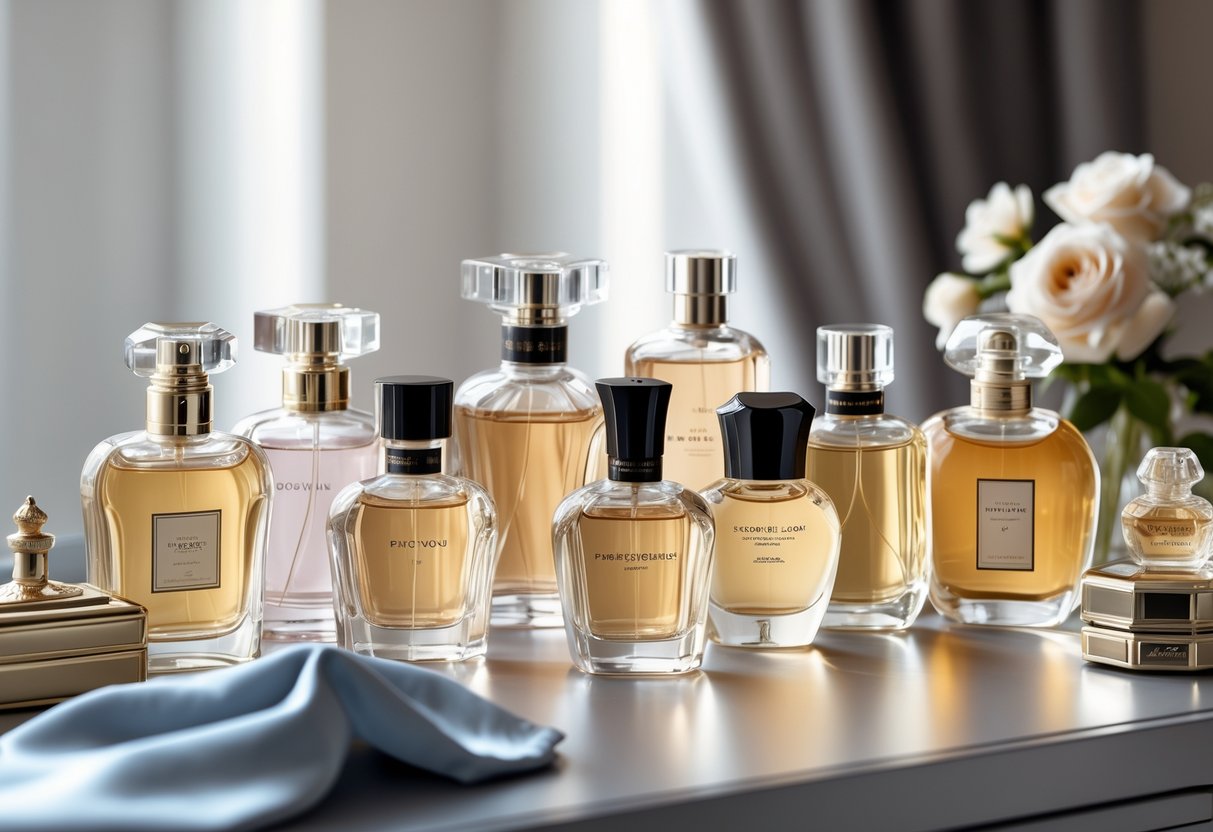
Signature fragrances can range from enduring classics to innovative boutique creations. These scents often reflect craftsmanship, history, and distinct character, serving as reliable staples in a personal fragrance wardrobe.
Classic Signatures and House Icons
Classic signature fragrances have stood the test of time through consistent quality and unique olfactory profiles. Guerlain Chamade is a notable example, renowned for its floral aldehyde blend that balances rose, jasmine, and ylang-ylang. Guerlain L’Heure Bleue, another legacy scent, offers powdery iris and anise notes, capturing an elegant and nostalgic aura.
These house icons define eras and often become benchmarks within perfume families. They deliver familiarity without sacrificing complexity, which makes them ideal as foundational scents in a wardrobe. Their compositions tend to be balanced and versatile enough for frequent wear in formal and casual settings.
Niche and Boutique Perfume Brands
Niche brands focus on distinct creativity and rarely conform to mainstream trends. Serge Lutens Bois de Violette is a clear example, with its powdery violet and woody accords creating a unique signature experience that stands apart from mass-market fragrances.
Boutique brands like Annick Goutal Néroli and Atelier Cologne emphasize craftsmanship with natural ingredients and original combinations. Jo Malone’s offerings, often built around simple yet refined citrus and floral notes, allow users to layer scents and personalize their wardrobe. These brands encourage experimentation and individuality, expanding the range of signature options beyond traditional houses.
Caring for and Maximizing Your Fragrances
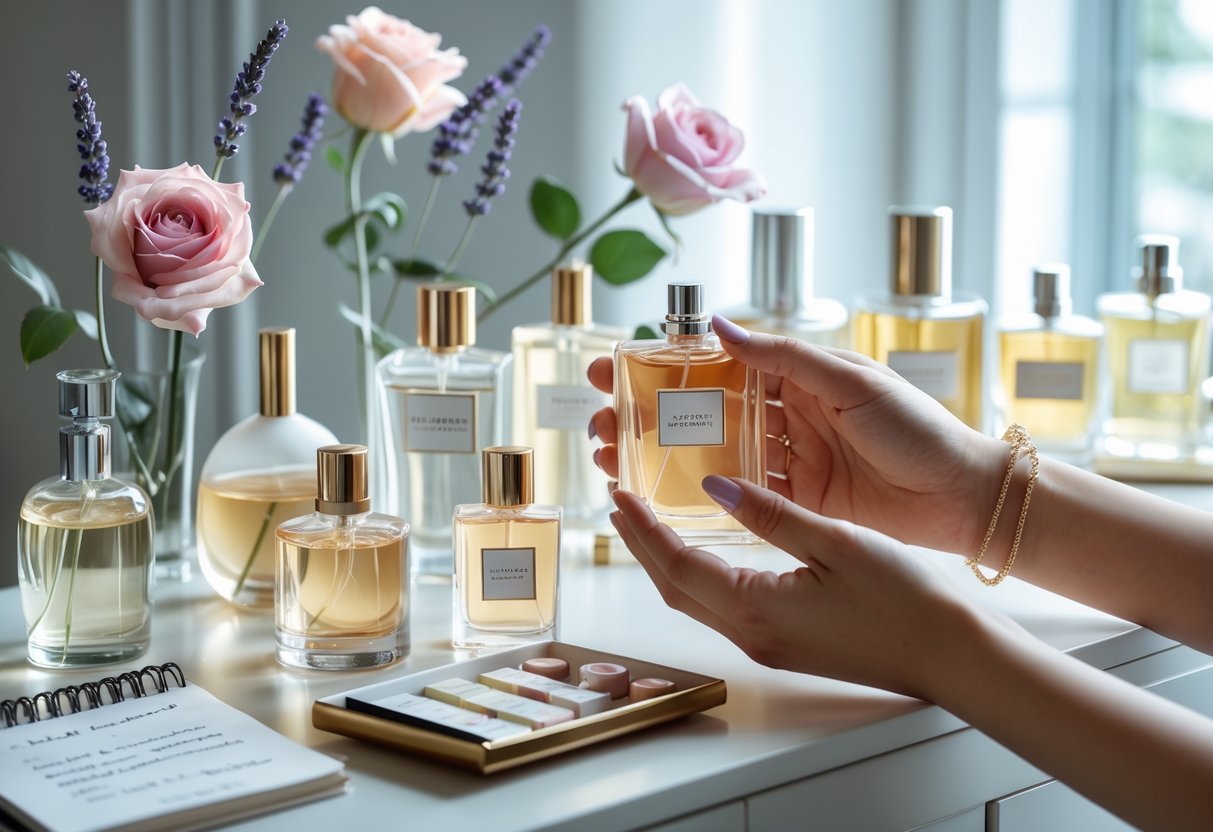
Maintaining a fragrance collection requires attention to storage and application to ensure scents last longer and perform well. Protecting perfumes from environmental factors preserves their integrity, while certain techniques can extend their staying power throughout the day.
Proper Storage Techniques
Fragrances should be stored in a cool, dark place away from direct sunlight and heat. Exposure to light and high temperatures can break down scent molecules, causing the perfume to degrade or change.
Avoid bathrooms due to humidity, which can also affect the fragrance’s composition. A dedicated drawer, cabinet, or closet shelf with stable temperature is ideal.
Keep bottles tightly closed to prevent oxidation. Original boxes add protection from light, helping to maintain the perfume’s quality longer.
Tips for Enhancing Staying Power
Applying fragrance to moisturized skin helps lock in scent by slowing evaporation. Unscented lotion works best as a base.
Target pulse points like wrists, neck, and behind ears because warmth in these areas intensifies the fragrance.
Avoid rubbing wrists together after application, which can break down scent molecules and reduce longevity.
Layering scents using matching body products such as lotion, shower gel, or deodorant from the same line can boost staying power without overwhelming.
A light spritz on clothing or hair can also add subtle longevity, but test fabrics first to avoid staining.
